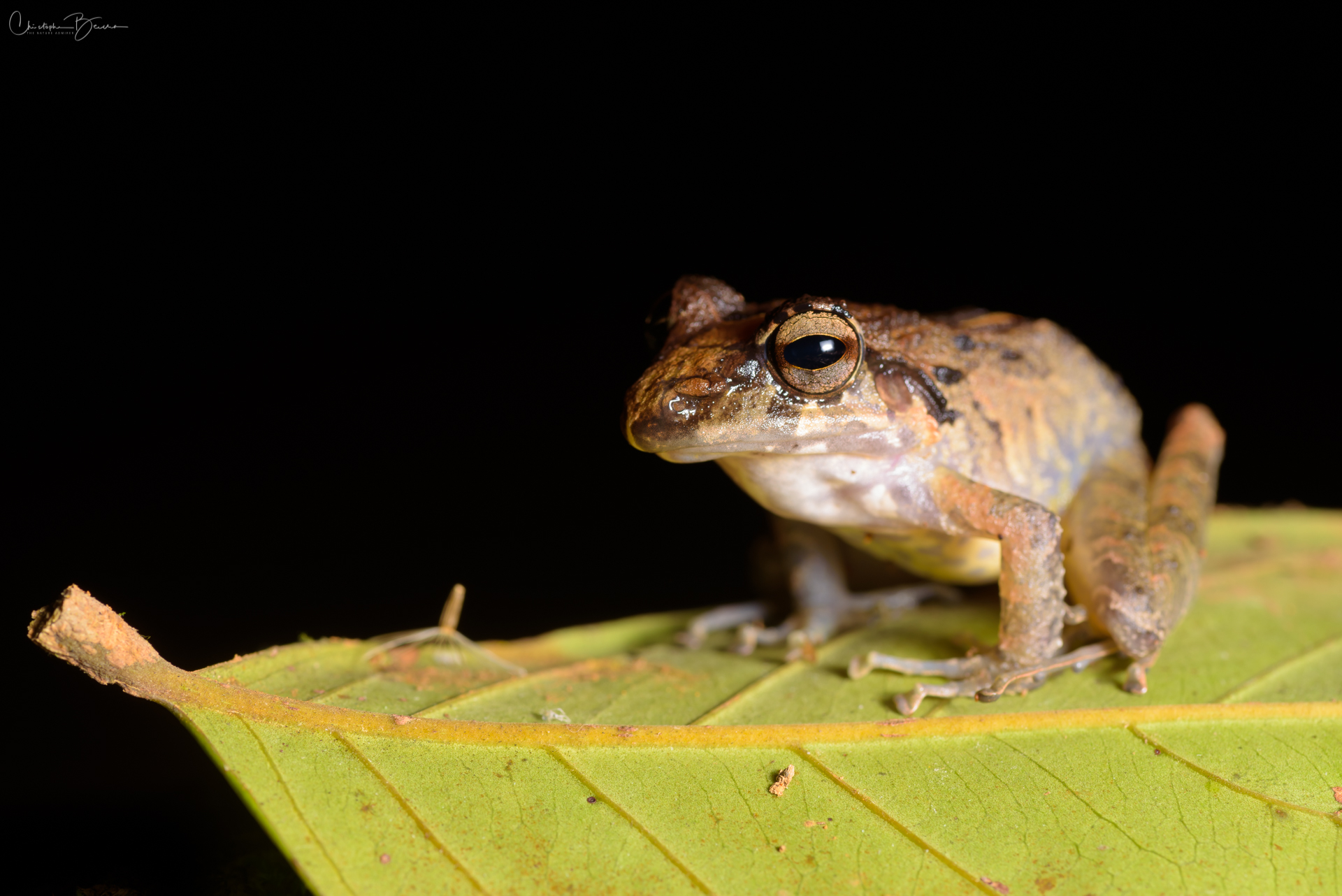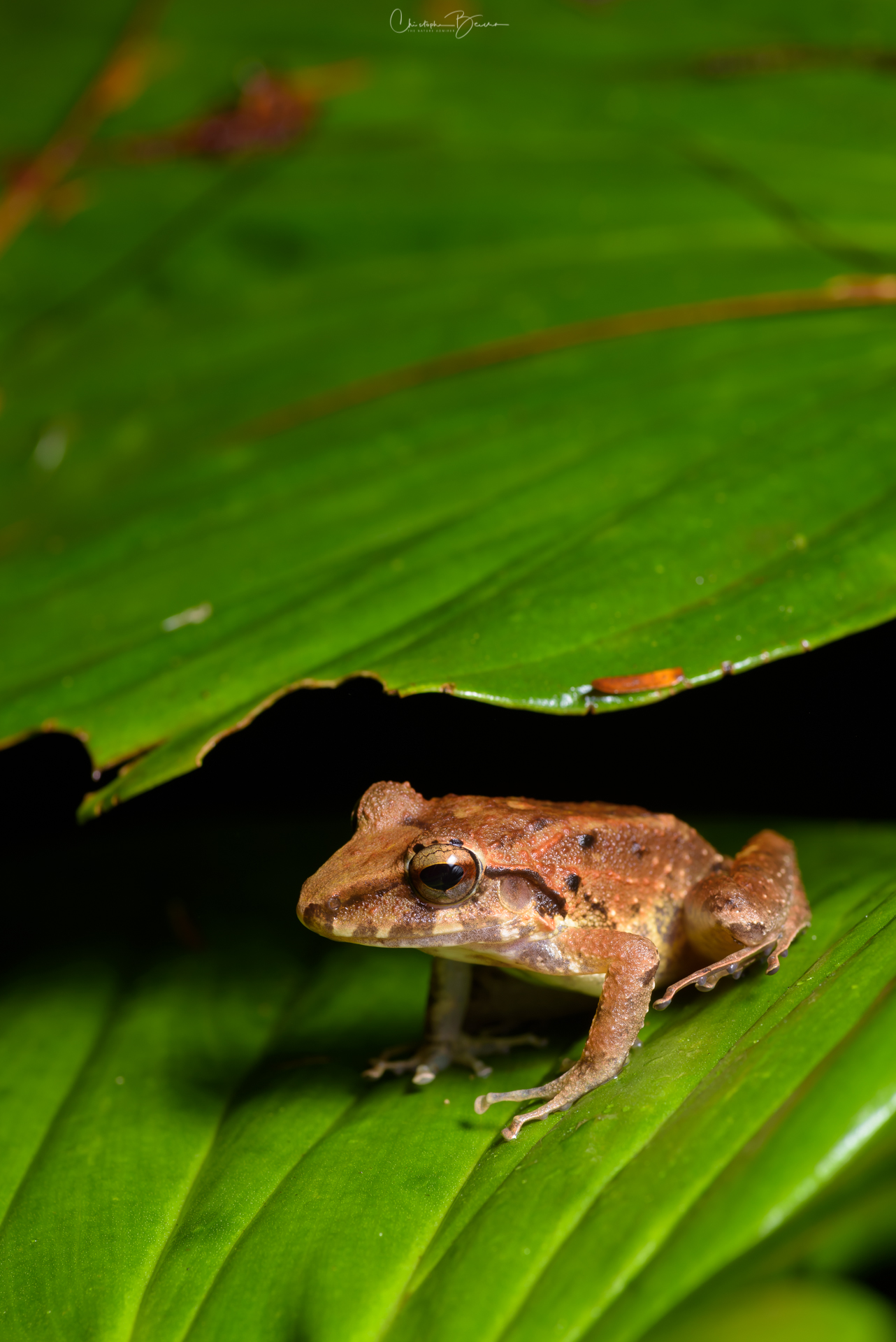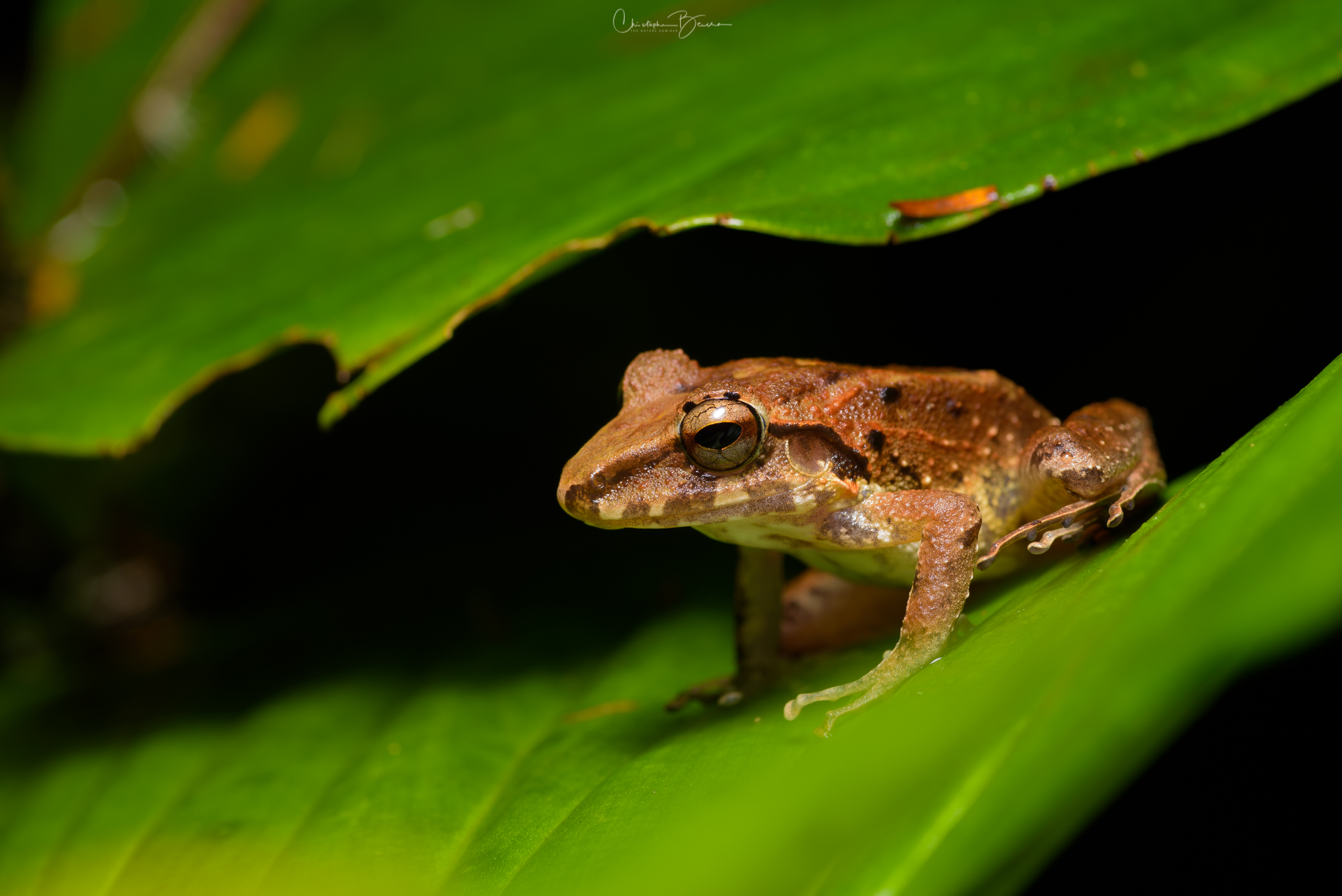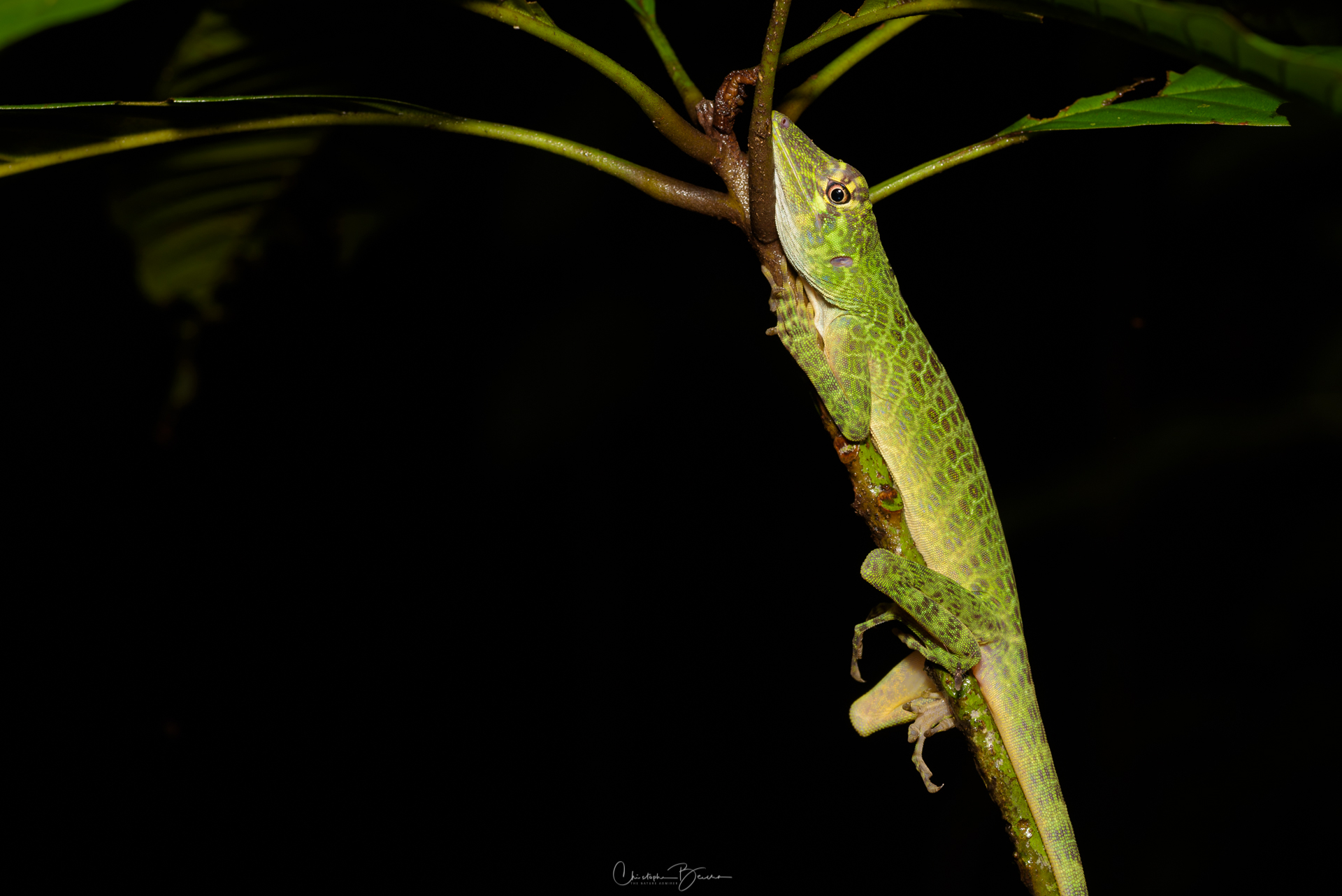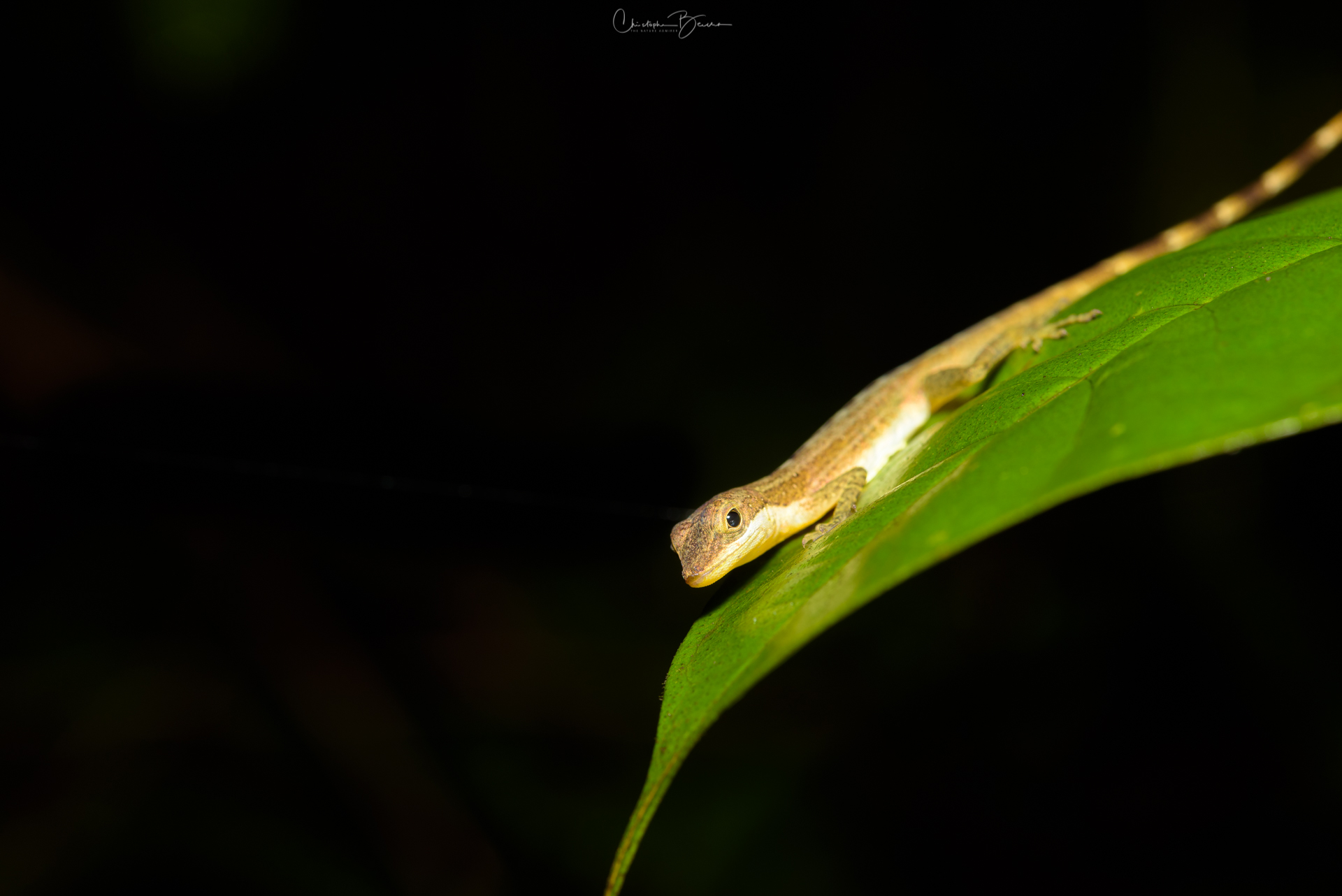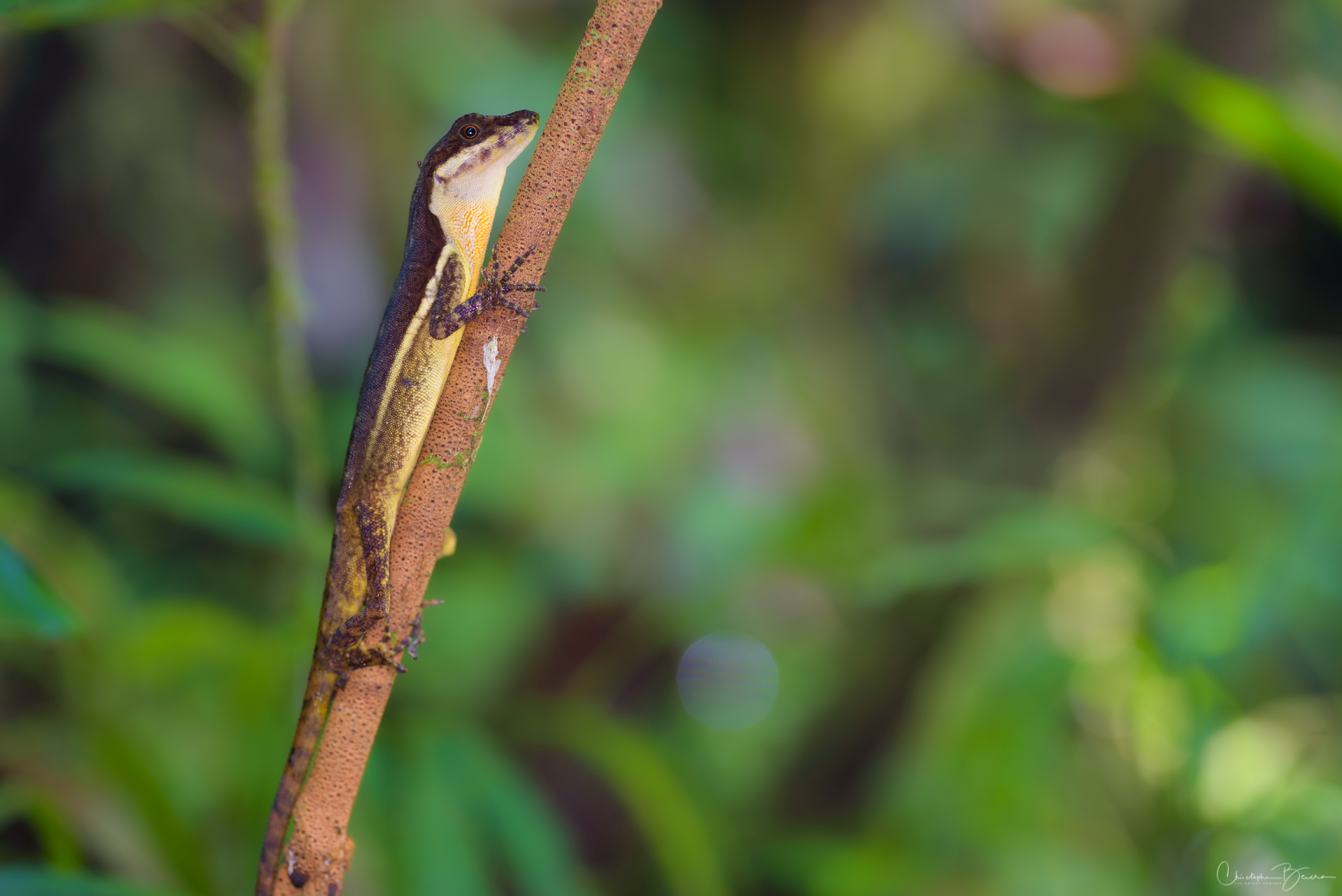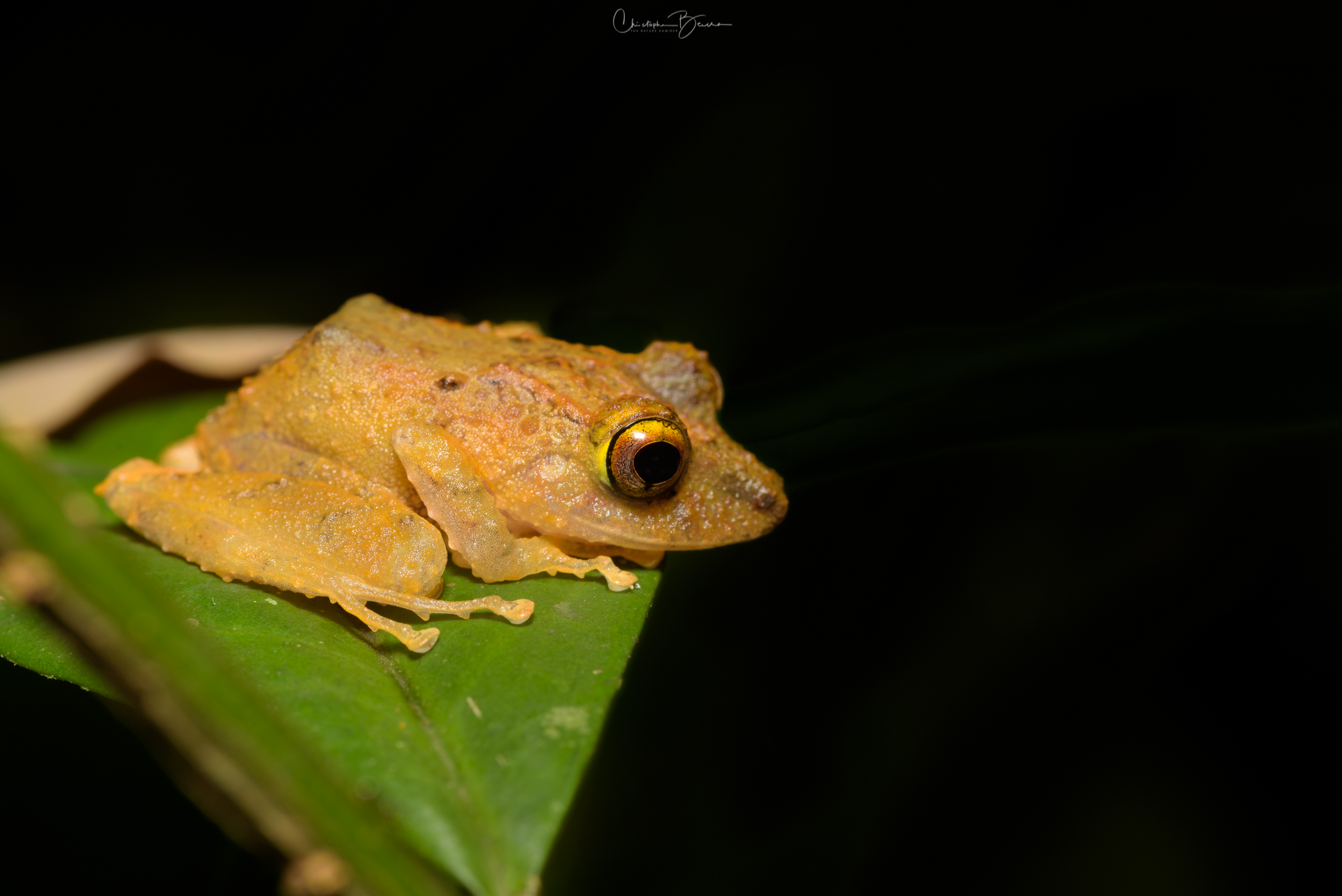Common Rain Frog (Craugastor fitzingeri)
On my three trips to Yatama Ecolodge, I have seen this frog species plenty of times, but it was only on my latest one on April 2022 that I captured some share-worthy pictures. We spotted this first individual on a green leaf that layed on the ground, which I thought was unusual given how these frogs prefer to camouflage in the leaf litter using their brownish skin. It remained there patiently as I took pictures from many angles and tried different flash placements to see the effect on lighting. A second individual was calling from a leaf about one meter above the ground, which also I thought was unusual. It was difficult to spot as other leaves would conceal it from view, but I asked my dad to help me with flash placement and holding a few loves while I leaned my body in to get closer shots.
